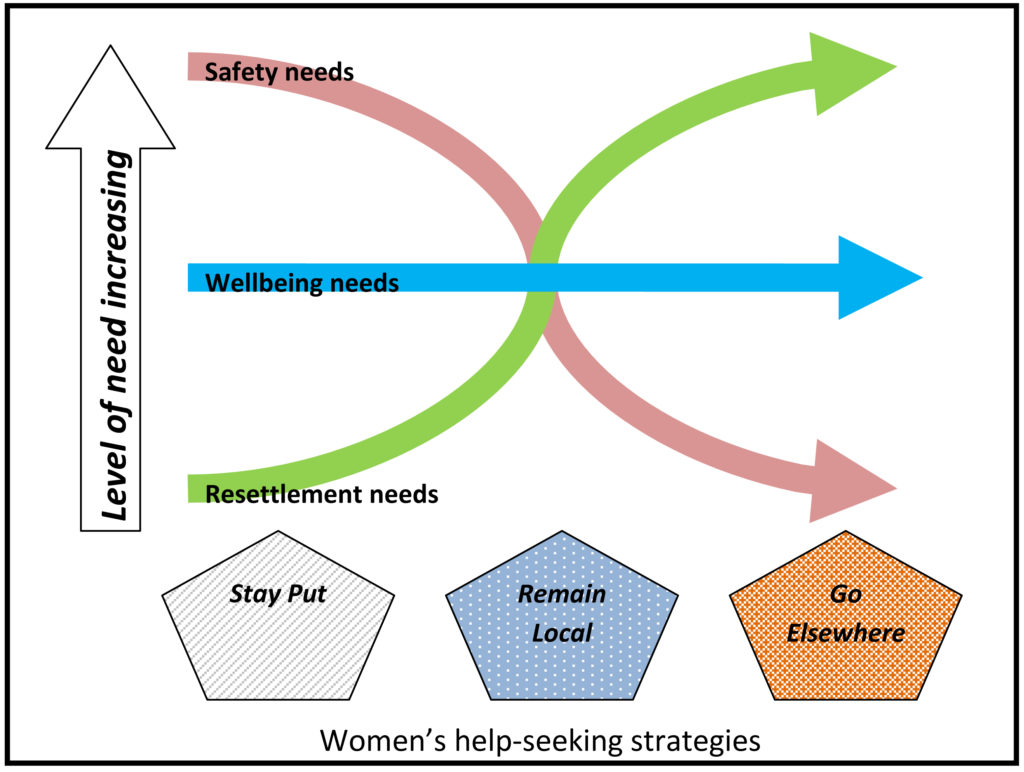At every twist and turn of women’s journeys away from abuse they are balancing the threats and risks against them with their own needs and plans and options. It is a constantly changing assessment, as she tries to assess what she needs and wants, against what she can find to help her.
Meanwhile, as she interacts with services and professionals, they may be carrying out formal assessments of her — and her children’s — safety and other needs.
However, current “Risk Assessment” tools are often not dynamic enough to deal with all these moving parts.
One aspect that is often under-recognised by service assessments and responses is how women’s location strategies — whether she is trying to stay put, remain local or go elsewhere — interact with their needs. The diagram below shows how levels of key needs for safety, wellbeing and resettlement vary according to the strategies women use.

Wellbeing is a constant need—women and children’s wellbeing will have been harmed by the abuse, and can be rebuilt by their own emotional labour, and supported by peer and specialist support in different contexts.
Other needs, however, interact strongly with the strategy a woman is attempting at any one time. If she is attempting to Stay Put, her safety needs will be very high, but her resettlement needs are low, as she and her children are staying in a familiar place. However, if she goes to an unknown and maybe distant place, her safety needs are massively reduced (and she will become ineligible for any risk-based support services) but her resettlement needs are greatly increased as she is literally safe but deeply displaced in a new area.
This shows the folly and injustice of eligibility criteria based solely on assessing level of risk—excluding women and children who are most in need of resettlement support. Women’s and children’s recovery will therefore take so much longer, with all the personal and economic costs, if they are left literally safe but isolated and stuck in terms of moving on from the abuse.
The interplay of different needs and strategies indicates the importance of holistic and dynamic responses to domestic violence, which build on women’s own responses and rights. A new open-access article published from this research includes much more detail[1].
[1] Bowstead, Janet C. 2021. “Stay Put; Remain Local; Go Elsewhere: Three Strategies of Women’s Domestic Violence Help Seeking.” Dignity: A Journal of Analysis of Exploitation and Violence 6 (3): 4. doi:10.23860/dignity.2021.06.03.04. https://digitalcommons.uri.edu/dignity/vol6/iss3/4/
